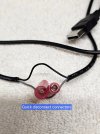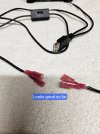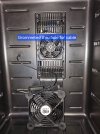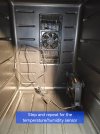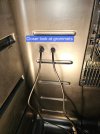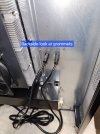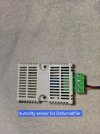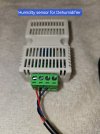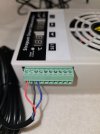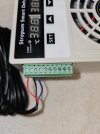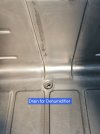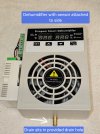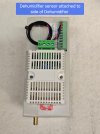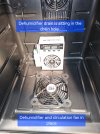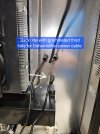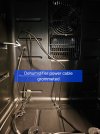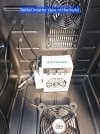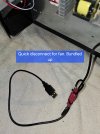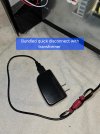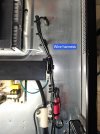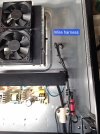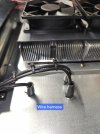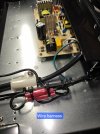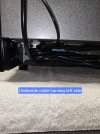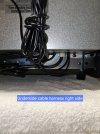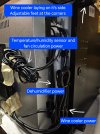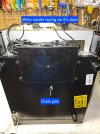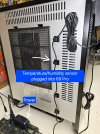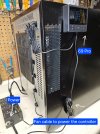TREMOJEM KOOLATRON BUILD CONTINUED...

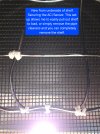
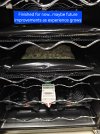
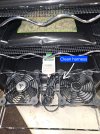
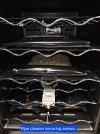
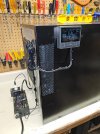
Hey, so I am kinda in the middle of my dry, so all of this report is going to represent that specific time line and when a new dry starts in a few weeks, it will pull from this data, but a whole new data set will be created, and going forward it is expected that the dataset represents massive flexibility in that the following criteria needs to be considered...
Cultivar
Average bud size and density (larf?)
Amount (wet weight)
Wet trimmed or not
Whole plant hang dry, or individual buds, etc.
So when I say, "these are guidelines" it is a fact.
The goal is a slow and low drying environment. Anything below 70 degrees Fahrenheit while maintaining a dew point of 53, or a VPD of 8. From there you slowly bring the humidity down each day over a two week period.
I am not convinced I can achieve the goals with the current set up. I will try another method whereby I trigger the Dehumidifier with the AC Infinity controller and not the Stropum on board controller.
I will keep updating as I learn more.
DAYS LATER AFTER WATCHING LARGE SWINGS
So, I have given this some thought and my in-experience leads me to think that the swing in data points you see in the images below are from a long Dehumidifier cycle. It is set for...
"On @ 55"
and
"Off @ 50".
I think I am going to change the settings to...
"On @ 51"
and
"Off @ 50".
This should drastically decrease Dehumidifier cycle time, and in doing so, prevent the Dehumidifier from overheating the interior.
The difference I am hoping for is that the wine cooler will be drying the interior instead of fighting the heat generated by the Dehumidifier cycle time, as the Dehumidifier will only run for a very short cycle, and not keep throwing heat into the interior.
Thoughts or suggestions are most appreciated.
MY ANSWER TO A QUESTION
So, Firstly I cannot take credit for any of this. I have viewed 100s of videos/threads all over the internet, that have blazed this trail long before me, so thank you to all of them.
So, the cycle time, and forgive me if I misunderstood your question. The Dehumidifier is just that, a fully programmable stand alone device. No other person I know of used this device, so there is that deviation to the design, that my executive decision determined was appropriate, from my research. Additionally, the modules available online where not up to snuff, and required additional resources that in the end drove up costs and added more unnecessary complexity to the build.
Typically, other users tear down and strip a Dehumidifier to only the module, and control it with a third party programmable controller. I can achieve this by simply connecting my Dehumidifier to an AC Infinity controller and cycle it with the AC Infinity controller.
But, it is just as simple to use the onboard programming functionality of the Dehumidifier and until someone tells me different, I'm not confident there is an advantage to cycling power with the third party controller. Albeit, since I'm already using it to monitor environment, why not use it to control the Dehumidifier, so the thought of it is not lost on me.
Okay, according to the internet...the purpose of the Dehumidifier, is to raise the internal temperature of the wine cooler, resulting in the cycling of power to the wine cooler, based off of the temperature target of the wine cooler. The Dehumidifier cycle time is determined by the controller.
Here is the rub...if controlling the Dehumidifier is managed by a third party controller, then the cycle time of the Dehumidifier is short, very short. This is a result of the third party controller being satisfied when target temp is reached, by the cooling efforts of the wine cooler that has been triggered by the third party controller.
Conversely, using the Dehumidifier's onboard programming controls, allow for a different scenario. This is where I dropped the ball, only to later, have an epiphany regarding the cycle time.
Originally, I had set the cycle time too long. My data set proves that the Dehumidifier was heating the interior so much, that the wine cooler fought to cool the interior and defeated the purpose of a slow and cold drying environment. Instead, I had big swings in the environment and unachievable environmental goals.
My remedy to this, was to drastically reduce the cycle time of the Dehumidifier, by changing the parameters or triggers. In doing so, the goals have been met, with regard to the environment.
I now have the correct environment for my goal of a slow and cold dry. Please know this. I am a rookie. I am learning. I am sharing, even my failures. All, in an effort to further our communities effort to have the very best experience.
So, please continue to deep dive this subject and thank you.
ANOTHER QUESTION I ANSWERED
So sorry, no. One of my concerns about this build was the very issue of fresh air turn over. I do not believe there is much of that happening. My build calls for two fans to be used, I am just waiting for my second fan to arrive. But, having said that, I have no concerns about indirect air "circulation". Instead, I'd like to see some fresh air turn over.
I am giving that some thought, as I am dancing around the idea of building my own enclosure or chamber, from ground up.
Or, maybe retrofit an old fridge..
UPDATE
Latest update...
Please note that this dry was started as a Lotus Dry, in my fridge and after five days went into the Koolatron, so it is not a good representation of this methodology.
Next dry will be first real test.
Dry is completed at a little over 14 days.
12% moisture on average, and into Grove Terploc Bags, and back into Koolatron to cure at 62F and 60 RH.
Here are the mechanical changes to Koolatron.
Cut both bottom shelves to allow 75% usage, as I only removed the back rail. Now, both bottom racks fit easily around Dehumidifier, that is located in the rear of Koolatron. One of the two bottom shelves holds the Dehumidifier sensor and the other shelf holds the circulation fans.
I also secured the ACI Sensor to the bottom of the top shelf. I can pull shelf out to load with buds, without concern for the sensor, or simply remove pipe cleaners and then you can completely remove shelf from Koolatron.
I added four rubber feet to the bottom of the Dehumidifier to slightly elevate it, while the drain nipple still sits inside the Koolatron drain hole. The feet also prevents it from slipping or sliding, not that it's necessary, but a nice added perk. It also allows for some air movement to the area under the Dehumidifier and around collection area and drain hole, which is the reason for that change.
I am not able to remove the shelf with the Dehumidifier sensor, but am able to remove shelf with the circulation fans. The shelf with the sensor is easily freed up in seconds, as it is only a pipe cleaner holding it in place. Not sure it is necessary to move either, but it's nice to know the increased capacity is there should I need it. Just add the food safe perforated grill mats and load up with fresh buds.
I further cleaned up the wire harness for the circulation fans and it sits on the same shelf as the fans. Since adding the second fan, I have reduced output speed on both to low from high.
SEE NEXT POST


